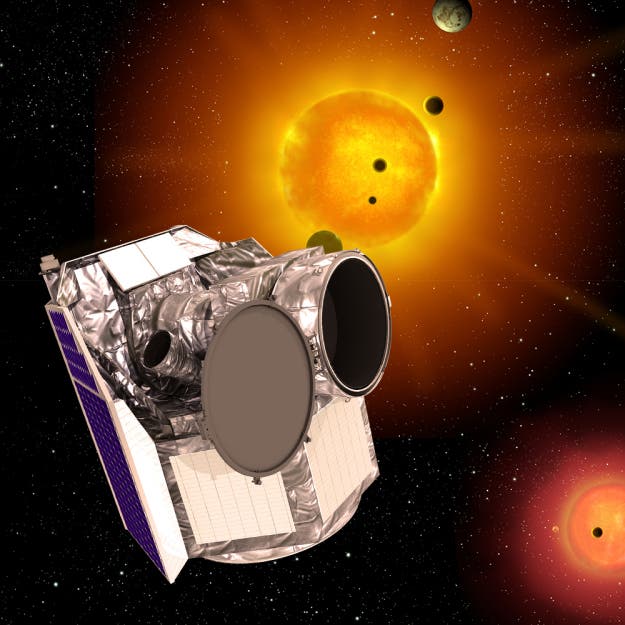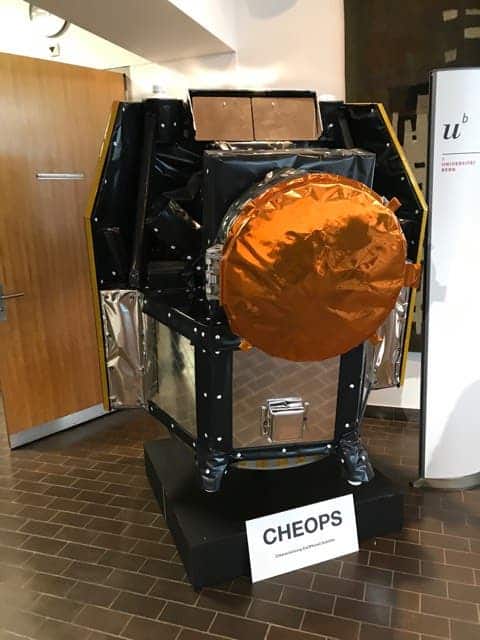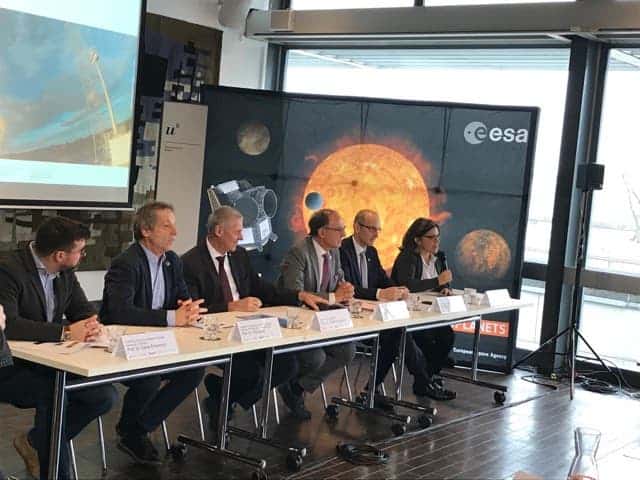
The European Space Agency’s (ESA) space telescope CHEOPS (CHaracterising ExOPlanet Satellite) begins its journey into space aboard the Soyuz rocket on December 17th. In preparation for the launch from French Guiana, collaborators in the mission, the ESA, the University of Geneva and the University of Bern held a press conference on the morning of the 5th December.
The gathered experts from the respective agencies discussed the mission–the ESA’s first ‘S-Class’ or small scale project–the international collaboration that brought it together and the role CHEOPS will play in the investigation of Exoplanets and the search for life elsewhere in the universe.
“After over six years of intensive work, I am, of course very pleased that the launch is finally in sight,” Willy Benz, CHEOPS’s principal investigator and professor of astrophysics at the University of Bern states.
The main role of CHEOPS will be to examine the ever-growing catalog of exoplanets, explains David Ehrenreich, CHEOPS Consortium Mission Scientist from the University of Geneva.

This involves selecting what Ehrenreich describes as ‘golden targets’ or exoplanets that missions such as the James Webb Space Telescope (JWST)–set to launch in 2021 from the same site—can follow-up on in order to perform in-depth examinations. As the JWST will search for signs of habitability–mainly indications of water and methane– it is a massive advantage for it to have preselected targets to study.
CHEOPS will enforce this selection process by examining nearby bright stars that are known to host exoplanets–particularly those with planets in a size range of Earth to Neptune. By measuring the transit depths as these planets cross their host star–the sizes of the planets can be accurately ascertained and then the researchers can also calculate their density and in turn, their composition–if they are rocky or gaseous, for example. The mission should also be able to determine if the planets possess deep oceans–believed to be a key component for the development of life.
A Small Mission Can Answer Big Questions
Kate Issak, a CHEOPS project scientist from the ESA explains how the mission–the first part of the Cosmic Vision 2015-2025 program–differs from previous endeavors undertaken by the agency: “CHEOPS is the first S-class mission for ESA, meaning it has a small budget and a short timeline to completion.
“Because of this, it is necessary for CHEOPS to build on existing technology.”
The cost of CHEOPS is an estimated 50-million Euros and it has taken 5 years to complete after being greenlit in 2014. Whilst this may not seem like a small amount of money or a short period of time, the cost and preparation time of the JWST–about 9 billion Euros and 7 years–very much puts both into perspective.
But neither a short timeline to completion or a small budget nor the fact that it mainly bridges the gap between past and future investigations will stop CHEOPS from attempting to answer some of the biggest lingering questions in exoplanet research.
Ehrenreich lays out some of the big questions that CHEOPS may have the potential to tackle, namely:
- How do planets form?
- At what rate do planets occur around other stars?
- What are the compositions of these planets?
- How do these compositions compare with the compositions of planets in the solar system?
- Is our solar system unique or common?
And perhaps most interestingly for the general public and scientists alike:
- Are any of these worlds habitable?
By tackling these questions CHEOPS and the ESA really get to the heart of both space exploration and exoplanet investigation.
CHEOPS: Empathising collaboration
As is fitting for a mission that probes such fundamental ideas as, how common is life in the universe, the ESA is throwing the use of the CHEOPS equipment out to other institutions and researchers.
Whilst 80% of CHEOPS’s operating time will be determined by the ESA’s mission program, Issak explains, the remaining 20% will be devoted to the wider scientific community. The projects and researchers that will be able to make use of this time will be determined based on merit alone.
“CHEOPS will build on the work of the consortium and benefit the scientific community as a whole,” promises Issak.

The idea of community spirit is built into CHEOPS’s DNA from its genesis, Willy Benz the mission’s principal investigator explains. The project brings together 11 individual nations each of which has made a specific contribution to the equipment aboard the satellite.
Issak adds “CHEOPS is an excellent example of how EU member states can work together.”
The ESA will follow-up on CHEOPS with PLATO (PLAnetary Transits and Oscillation of stars) project in 2026, and ARIEL (Atmospheric Remote-sensing Infrared Exoplanet Large-survey) mission in 2028.
Plato will specialise in the examination of rocky exoplanets orbiting in habitable zones around Sun-like stars, particularly focusing on the potential for these planets to hold liquid water. It will also examine seismic activity in stars–giving insight into the age and evolutionary stage of these planetary systems.
Ariel, meanwhile, will take exoplanet survey and characterisation to a whole new level of detail, enable to perform chemical censuses of a wide variety of planet’s atmospheres.
As the award of this year’s Nobel Prize in Physics to Michel Mayor and Didier Queloz for the discovery of the first exoplanet around a Sun-like star demonstrates, the search for exoplanets and the quest to categorise and understand them is currently one of the hottest research areas in science.
As such CHEOPS puts the ESA at the forefront of the race to discover how common our home planet and the solar system is, and potentially, answer an age-old question: are we alone in the Universe?


